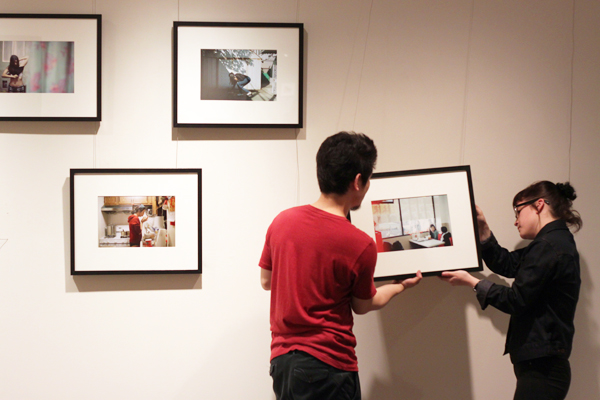
For six weeks out of the year, the Dorsky is transformed into a mecca of student artwork, as the museum displays the Bachelor of Fine Arts (BFA) and Master of Fine Arts (MFA) thesis exhibitions. The museum houses work from all seven fine arts programs, including large-scale paintings, photography series, video installations and found-object sculptures.
Dorsky Director Sara Pasti said the museum enters the thesis process near the end with the goal of providing the students with their first professional museum experience.
“When the students come to us, they’ve been working for a year-and-a-half or two years in the studio space with the clutter, beauty and chaos that goes with making something,” Pasti said. “The goal of the museum is to provide a formal capstone presentation of a student’s work — this is essentially their thesis paper in the form of an exhibition.”
After the students have chosen the works they’ll show — in conjunction with their faculty advisor — Pasti said they will meet with Preparator Bob Wagner and Graduate Assistant Jon Irving to work out the logistics of how to best display their artwork.
Despite serving as a showcase of individual work, the thesis show’s curatorial process is quite collaborative. Pasti said the exhibitions are student-developed and student-run, with the BFA and MFA candidates designing their own floor plans, assigning spaces and almost everything in between.
“Students will go away and come back, [and] we essentially help them brainstorm about questions of hanging and lighting,” she said. “The goal is to make a show that will make everyone’s work look really well — some people need dark corners, some need wide open spaces.”
With about 10 to 12 students per thesis show, space is a hot commodity — the artists often trading and swapping based on the needs of their thesis. For some, like fourth-year metals major Allison Geist, the original space they chose didn’t complement their final body of work.
Geist said she chose her spot at the beginning of the semester while still “unclear” about the design of each piece. After discovering that a large floor installation in front of her original space would make it hard to walk through her show, she said she had to consult with another artist about changing spots.
“I was lucky enough to move to the space I have now — it really worked out for me,” Geist said. “There was enough room for all my work and room for people to walk around.”
Even though fourth-year painting major Dylan Robinson didn’t choose his space and was “shuffled” around a bit, he said being put in “the cave” worked well with his artwork.
“I liked the cave because my work — video and installation — exists well in a slightly darker space,” Robinson said. “The soft glow from the monitors out from the dark wall was pretty nice.”
Others were adamant on choosing their space, like fourth-year photography major Peter Nicholson, whose BFA show opens on Friday, May 3.
“I wanted to isolate my work as much as possible,” Nicholson said. “I wanted a single wall on which I held exclusive control over the placement of my photographs. The northernmost wall of the gallery was the only place which fit.”
As with all galleries, the Dorsky has rules and regulations that the students have to abide by in order to exhibit their work. The museum prohibits nails in the wall, which is why they use a special Arakawa hanging system.
Likewise, in an effort to create an “intentional” consistency for the entire show, Pasti said the Dorsky provides labels for all works.
“Our role [is] to provide the space and assistance for a really professional presentation of their work,” she said.
Despite experiencing various “technical frustrations,” like scratched prints, botched cuts, dust spotting and color correction, Nicholson said putting together his thesis show helped him see himself through his work.
“I learned things about my inner process,” he said. “I know myself better for doing this work.”
The second BFA exhibition opens on Friday, May 3, and the MFA exhibitions open on May 10 and 17.

